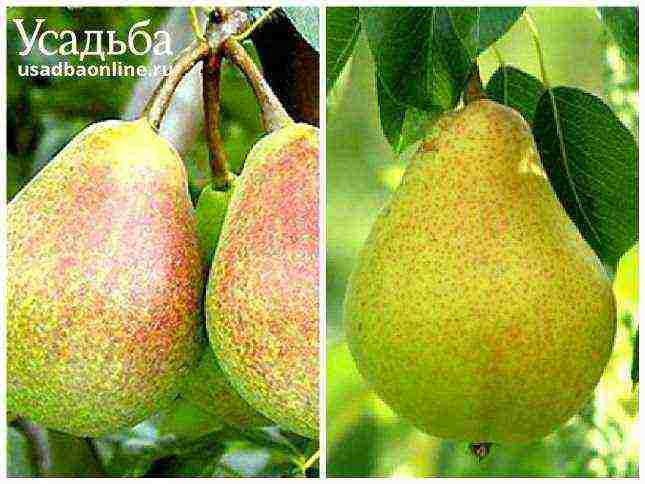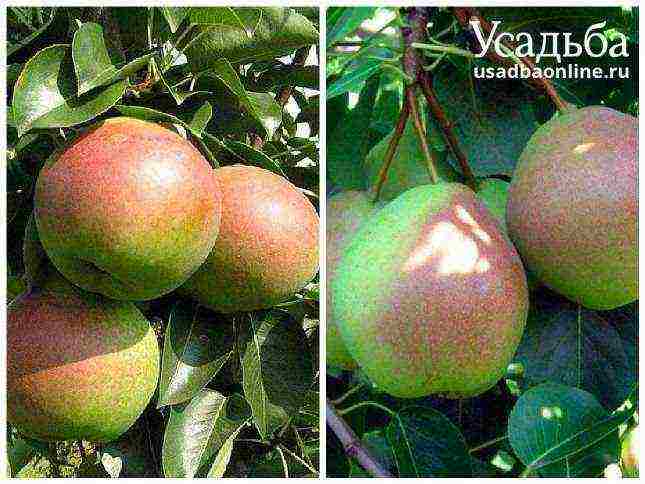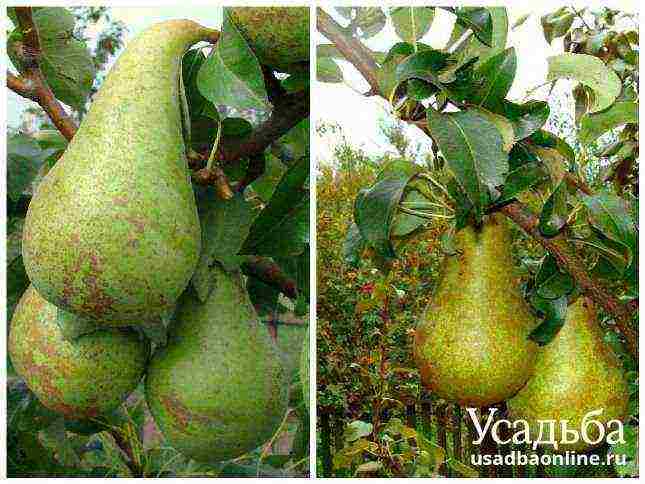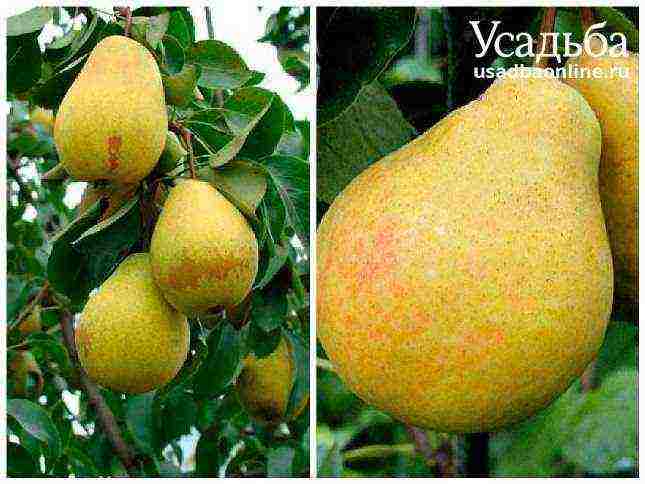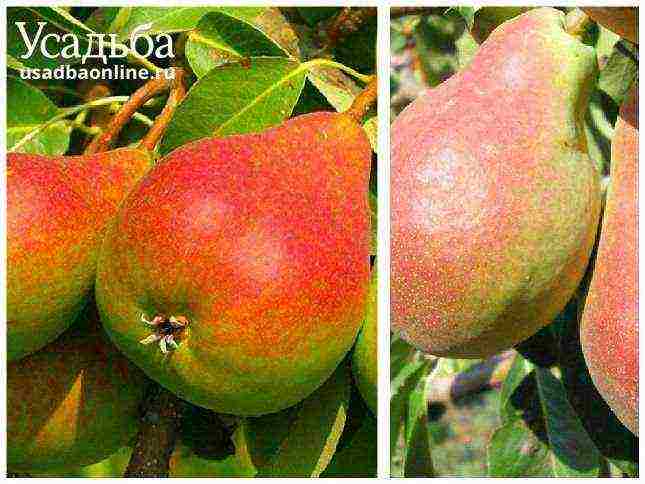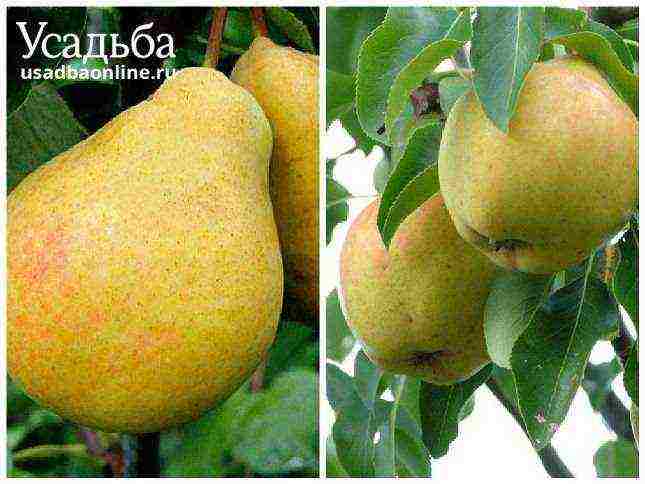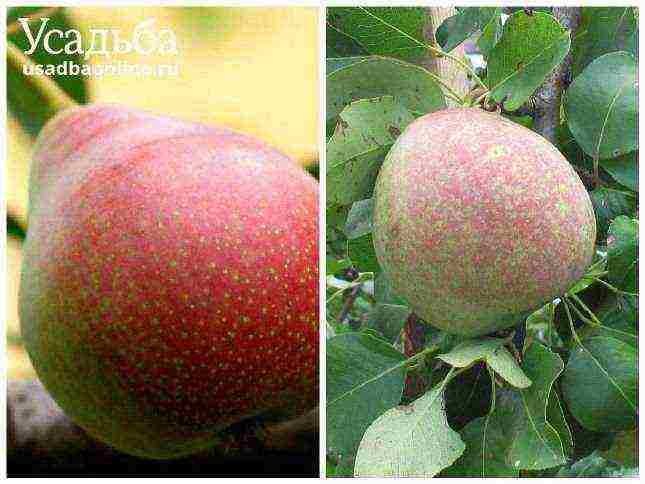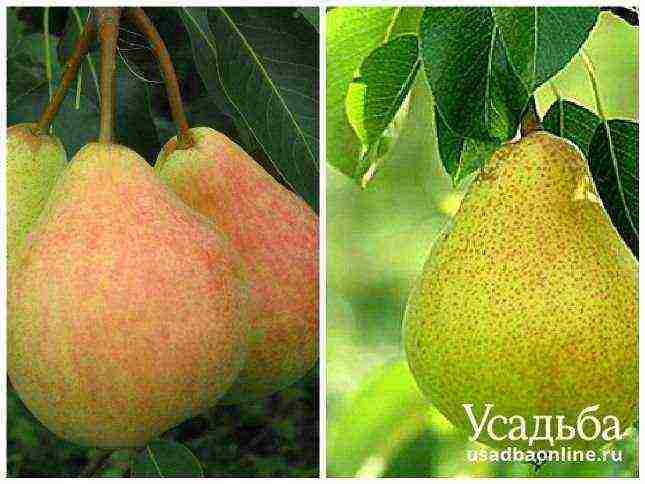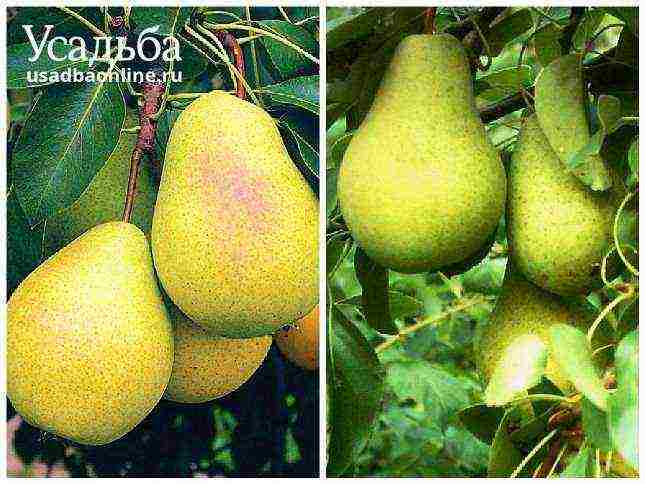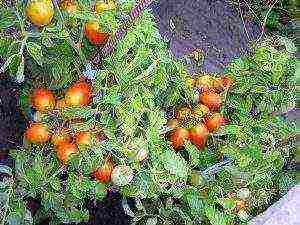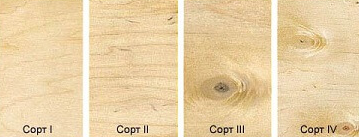Content
- 1 Bere Bosc
- 2 Summer Duchess (Williams)
- 3 Conference
- 4 Lada
- 5 Clapp's Favorite
- 6 Muscovite
- 7 Marble
- 8 In memory of Yakovlev
- 9 Chizhovskaya (Chizhevskikh)
- 10 10
- 11 9
- 12 8
- 13 7
- 14 6
- 15 5
- 16 4
- 17 3
- 18 2
- 19 1
- 20 August dew
- 21 Veles
- 22 Duchess Summer (Williams)
- 23 Clapp's Favorite
- 24 Muscovite
- 25 Olivier de Serre
- 26 Simply Maria
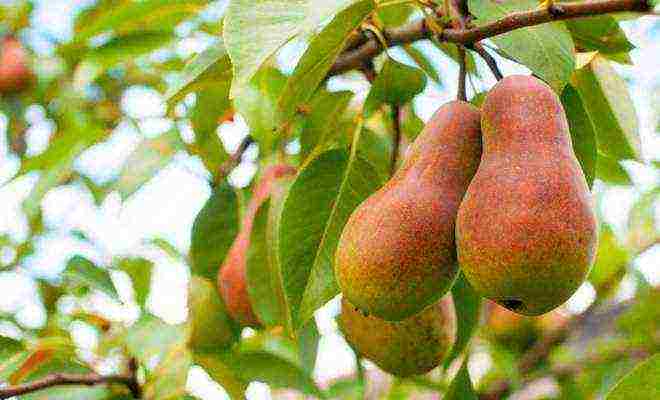
All pear varieties are divided into summer, autumn and winter. Depending on the timing of ripening, they have different purposes and characteristics. But which of the existing varieties are the best?
Choosing the best variety is not easy. It is necessary to take into account winter hardiness, resistance to common diseases, as well as taste. And the observations of experienced gardeners will help here. We have compiled a list of 10 pear varieties that, according to most gardeners, surpass many of the existing ones in their characteristics.
Bere Bosc
High-yielding autumn variety. The tree is medium-sized with a dense crown. Fruits are large, yellowish-brown in color, elongated pear-shaped. The pulp is white or creamy, grainy, juicy and aromatic, of excellent taste. The variety is suitable for dessert use.
|
|
||||
| Entering fruiting | Tree height (m) | Fruit weight (g) | Harvest | Shelf life (days) |
| 5-7 | 3,5-4,5 | 150-200 | Beginning of September | Up to 30 |
Dessert
High-yielding autumn variety. The tree is medium-sized with a spreading crown. Fruits are large, round, green-yellow with a slight blush. The pulp is creamy, juicy, soft, aromatic. The variety gives a consistently high yield, has absolute resistance to scab and some other diseases. The fruits are used both for fresh consumption and for canning.
|
|
||||
| Entering fruiting | Tree height (m) | Fruit weight (g) | Harvest | Shelf life (days) |
| 5-6 | 3-5 | 250-270 | Late August-early September | Up to 15 |
Summer Duchess (Williams)
Summer high-yielding dessert variety of pears. Fruits are fragrant, juicy, sweet, pear-shaped, light green when harvested, waxy yellow after maturation. The pulp is white or creamy, juicy, wine-sweet, with a nutmeg aroma. Trees do not tolerate frost and drought well. The fruits can be eaten fresh, dried and preserved.
Summer Duchess, or Williams, is self-fertile. You should always plant a pollinator next to it, for example: Forest Beauty, Favorite Klappa.
|
|
||||
| Entering fruiting | Tree height (m) | Fruit weight (g) | Harvest | Shelf life (days) |
| 5-6 | 3-5 | 180 | End of August | 75-80 |
Conference
High-yielding autumn variety. The tree is medium-sized with a dense crown. Fruits are symmetrical, elongated, pear-shaped, green in color with a slight rustiness. The pulp is pink-creamy, oily, juicy, very sweet. The variety is of interest for industrial cultivation, as it is one of the sweetest and most productive varieties.
|
|
||||
| Entering fruiting | Tree height (m) | Fruit weight (g) | Harvest | Shelf life (days) |
| 3-4 | 3-4 | 140-180 | Mid september | Up to 100 |
Lada
An early summer high-yielding variety. Standard tree, medium-sized. The fruits are sweet, pear-shaped, light yellow in color with a pale pink blush. The pulp is yellowish-white, fine-grained, juicy, with a weak aroma. The variety is resistant to disease and cold.
|
|
||||
| Entering fruiting | Tree height (m) | Fruit weight (g) | Harvest | Shelf life (days) |
| At 3 | 3-4 | 90-100 | Mid august | 60-70 |
Clapp's Favorite
Summer high-yielding pear variety. In the southern regions it ripens at the end of July. Fruits are yellow with a reddish blush. The skin of the ripe fruit is smooth. The pulp is white, tender, juicy, aromatic, sweet with a sour taste. When ripe, the fruits quickly fall off and are not stored for long.It is a self-infertile variety, but in the vicinity of Duchess Letniy, which will act as a pollinator, the tree will be able to fully "realize" its potential.
|
|
||||
| Entering fruiting | Tree height (m) | Fruit weight (g) | Harvest | Shelf life (days) |
| At 7 | 3-4 | 180-230 | Early august | 10-15 |
Muscovite
A productive autumn variety, perfect for growing in the middle lane. The tree is medium-sized. Fruits are wide pear-shaped, yellow-green in color, often with abundant rustiness. The pulp is white or creamy, coarse-grained, juicy, melting. The variety is winter-hardy. But he is afraid of drought, due to which there is a decrease in yield and fall of fruits.
|
|
||||
| Entering fruiting | Tree height (m) | Fruit weight (g) | Harvest | Shelf life (days) |
| 6-7 | 3-4 | 160-170 | Beginning of September | No more than 60 |
Marble
High-yielding autumn pear variety. The tree is medium-sized, the crown is dense. Fruits are round-conical in shape, yellow-green in color with a red-orange blush. The pulp is creamy white, fine-grained, juicy and aromatic. The fruits are suitable for fresh consumption and canning.
|
|
||||
| Entering fruiting | Tree height (m) | Fruit weight (g) | Harvest | Shelf life (days) |
| 6-7 | 3-4 | 160-170 | Late August-early September | Up to 75 |
In memory of Yakovlev
High-yielding autumn pear variety. The tree is undersized, the crown is of medium density, rounded. Fruits are light yellow with a faint pink blush, medium-sized, wide pear-shaped. The skin is thin, shiny, semi-oily. The pulp is creamy white, juicy, semi-oily. The variety is resistant to many diseases and has good winter hardiness.
|
|
||||
| Entering fruiting | Tree height (m) | Fruit weight (g) | Harvest | Shelf life (days) |
| 3-4 | 2-3 | 120 | September October | Up to 120 |
Chizhovskaya (Chizhevskikh)
Autumn pear variety, characterized by an early ripening period. The tree is medium-sized, standard type, with a dense cone-shaped crown. Fruits are yellow with a slight blush, large, obovate or pear-shaped, without ribs. The skin is thin, smooth and matte. The pulp is almost white or light yellow, medium juicy, semi-oily, melting, pleasant sour-sweet taste. The variety is characterized by frost resistance, high yield and resistance to major pear diseases and extreme growing conditions.
|
|
||||
| Entering fruiting | Tree height (m) | Fruit weight (g) | Harvest | Shelf life (days) |
| 3-4 | 3-5 | 120-140 | Second half of August | Up to 120 |
And, finally, one practical advice from professional gardeners: the wealth of the garden does not lie in a huge number of different varieties, but in several correctly selected varieties that suit the soil and climatic conditions. Only in this case, the trees will thank you with an excellent harvest.
Breeders create the best pear varieties, which are divided into categories according to ripening time, yield level, and growing area. They differ in taste and appearance of fruits and trees.
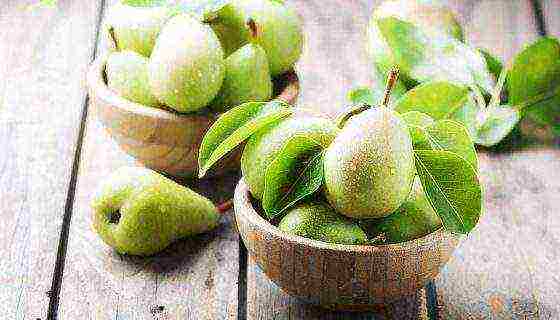
Description of the best varieties of pears
Summer varieties
Summer pear varieties bear fruit from early July to late August, which is why they are also called early ripening. They are distinguished by a long shelf life of ripe fruits: from 17 to 30 days. It is important that they are stored in a cool place: in the basement, cellar, refrigerator. Their only drawback is poor frost resistance. Early ripe pear varieties are grown after frost, otherwise the tree will die.
Characteristics of summer varieties of pears:
- a high level of fruiting (from 70 kg to 100 kg of pears from 1 tree);
- resistance to fungal infections;
- preservation of taste and aroma during storage.
Early maturing trees should not be grown in the Urals and Siberia. But in the central part of Russia and in the middle lane, this is a great option.
August dew
August dew is distinguished by low-growing trees. Their height does not exceed 2 m. The taste of the fruit is sweet and sour. They are green in color, which turns yellow during storage. Medium size, no ribs.
According to the description, the variety is grown only in the central regions of Russia. The variety does not tolerate temperature extremes and frosts, which is why it can die. Requires basic maintenance procedures: watering, fertilizing, warming for the winter, mulching, loosening the soil.
Another advantage of wood is scab resistance. It is also moderately resistant to fruit rot and powdery mildew.
Bere (Giffard)
The height of the tree is not less than 3-5 m. It has excellent branching. The branches are thin, drooping. The Bere tree begins to bear fruit on ringlets.
Fruits are yellow-green in color, when technical maturity is reached - red-yellow. The fruiting period begins on July 17-21 and lasts until the end of the month. The fruits are harvested daily so that they do not rot and spoil.
The only drawback of the Bere (Giffard) variety is the short storage time (up to 15 days) in comparison with the average statistical indicator of 17-30 days, therefore, the fruits of this variety are not suitable for transportability.
Description of Bere (Giffard) fruits:
- the pulp is wine-sweet, aromatic, tender;
- weight - from 70 g to 110 g;
- the surface is smooth;
- the shape is aligned, sometimes asymmetric;
- small subcutaneous points;
- long stalks;
- closed cup.
The plant bears fruit 6 years after planting. The yield level is average - 90-100 kg from 1 pear tree.
Cathedral

Fruits are kept fresh for a long time
The fruits of the Kafedralnaya variety are valued for their pleasant sweet taste. The pulp has an oily consistency, fine granularity. The density level of pears is medium. Inside, they are juicy and meaty.
The average weight of 1 cathedral pear is 70-90 g. In some cases it reaches 110-120 g. The shape of the fruit is regular, with a slight bumpy surface.
The skin is shiny, slightly oily, has a reddish-yellow color, but during storage changes it to light yellow with a blush.
The fruits are harvested from 1 to 15 August. They can be stored for 1-1.5 months, perfectly tolerate transportation and do not deteriorate on the road.
The yield level is low - about 80 kg per tree. But the main thing is that the Cathedral pear bears fruit regularly 4 years after planting.
Victoria
The pear grows up to 5 m in height, has a thickened, but compact crown with a rounded pyramidal shape. During the flowering period, it is covered with white and pale yellow flowers. Harvesting takes place in mid-late August, so the variety is late.
Fruits grow in weight up to 150-200 g, rarely - up to 300 g. They are symmetrical, aligned, have a regular pear-shaped shape. Their skin is smooth, matte, with few fibers.
Description of Victoria pear pulp:
- white;
- oily;
- tender;
- no granulation;
- juicy.
The fruits have a pleasant aroma. The taste is sweet, but slightly sour. 100 g contains 13% solids, 7.8% sugar, 0.5% titratable acids, 6 g of ascorbic acid.
Winter varieties
Winter varieties of pears are excellent for growing in Siberia and other northern regions, as well as for planting in the central part and central Russia.
Such pears are the most winter-hardy, they perfectly tolerate temperature extremes. The fruiting period is from November to February, depending on the type of fruit tree. The yield level is up to 300 kg per tree.
Characteristics of winter varieties:
- Long shelf life. Winter pears do not spoil for 3 to 7 weeks. The indicator is influenced by storage conditions and characteristics of the fruit variety.
- Less sweet taste. The taste is dominated by sourness, but the sweetness is also preserved. Despite this, the fruit contains many useful chemical elements that have a positive effect on the digestive tract.
- Use for recycling. Fresh are rarely used, most often they are processed. They make excellent dried fruits and compotes.
The peculiarity of the fruits of winter pears is that they cannot be eaten immediately after harvest. They should lie down in a cold place for at least a week.You can understand that they are ready for use by their appearance: the skin will acquire a light yellow tint, a ruddy side will appear. The fruit will become softer and less acidic.
The fruits require a mulching procedure. It is held at the end of November. To do this, use mulch paper, straw, rotted grass, etc.
Curé
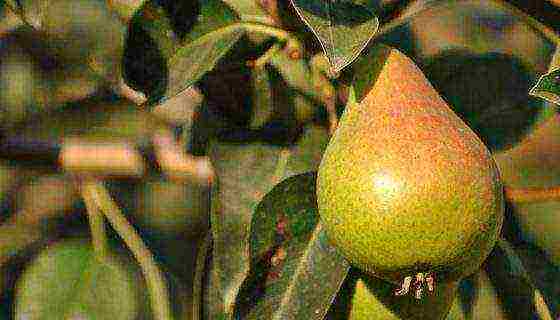
The Cure variety is distinguished by its yield
It belongs to the category of early winter varieties. It is defined as a tree with a highly thickened crown, so it requires frequent pruning to form the correct shape. The plant is tall - up to 8 m in height.
The fruits ripen alternately, and not at one moment, starting from the top and gradually moving downward. The tree bears fruit in September 20-25. One pear weighs up to 190 g, rarely up to 250 g.
At the time of harvest, the fruits are bright green, have a smooth skin, no blush. The pulp is hard inside, but oily, with a nutmeg aroma.
Usually the Kure pear gives up to 300 kg of fruit, but in productive years - up to 700 kg from 1 tree. It bears fruit even after severe frosts and droughts.
November
A vigorous dwarf plant. Its height does not exceed 2 m. The branching is small. The branches are directed downward under the weight of the fruit. Yields are low
Fruits weigh 60-80 g. Covered with a light red blush. When harvested, they have a rich green hue.
Other characteristics of the November pear:
- the pulp is white, juicy, buttery;
- the skin is glossy, shiny;
- the taste is sweet, but with a slight sourness;
- The aroma is pleasant, reminiscent of the scent of a blossoming apple tree.
The fruits can be frozen. They are used for cooking compotes, added to smoothies, fresh juices, diet cocktails. They are the base in marshmallow or decoration in pies.
Harvesting takes place after September 25th. Fruits are stored until early December at a cold temperature.
Elena
This variety has the most unusual pear shape. They resemble an apple.
The plant is early winter, frost-resistant. Begins to bear fruit in the 5th year after planting. It produces fruits regularly, annually. The harvest period is the end of September.
It is important to have time to collect ripe fruits within 10-15 days, otherwise they will start to rot, due to which the plant will be exposed to rot. Stored up to 4 months.
The average weight of the fruit is 150-200 g. Skin color is green with a slight blush.
Due to its good composition, the fruits are allowed to be consumed even by young children. They are hypoallergenic, so the likelihood of an allergic reaction is low.
Olivier de Serre
This is the sweetest variety of late winter pears. It is distinguished by small fruits, all of each fruit - up to 130 g. They have a rounded shape. There is a brown coating on top, under which a green skin is visible. It is rough, dense.
Description of the pulp Olivier de Serre:
- cream;
- juicy;
- melts in the mouth;
- has a sweet almond, nutty flavor;
- fleshy;
- consists of a variety of dietary fiber.
Even if it is not possible to collect the fruits in time, they will not fall off: they are firmly attached to the stalks.

The variety is prized for its excellent taste.
Harvested in mid-October, but consumed only in December. It is necessary that they stay in bed for 2 months. They are stored until the end of March.
They are eaten fresh, used for baking, dried and preserved.
Autumn varieties
Autumn varieties are grown throughout Russia. The main thing is to choose the right soil. A cultivated loamy soil with low acidity is suitable (if it is high, liming is carried out). The landing site must be sunny, but staying in the shade for about 2-3 hours is allowed.
To grow a high-yielding tree, the following procedures are carried out:
- watering;
- pruning branches to form a crown or rejuvenate the pear;
- loosening the soil;
- fertilization;
- disinfection from pests (preventive measures);
- mulching;
- frost protection.
Fruits are harvested until the end of September, rarely until October. The average yield is equal to 100 kg of fruit from 1 plant.The trees are winter hardy in most cases.
Red-sided
The tree grows to a maximum of 4 m. It grows actively for the first 4 years, after which the growth process slows down. The crown is rare, but spreading. The branches are curved. The bark is brown, gray on the branches.
Krasnoboka has mixed fruiting. The fruits are formed on the spears.
The plant necessarily requires pollinators to set and form fruit. Pears Severyanka, Myth, Powislaya are suitable.
Fruit varieties Krasnobokaya are the sweetest among all the autumn varieties of fruit. They are used for drying, preservation, preparation of compotes. Fresh added to fruit salads, marshmallows, ice cream, cottage cheese, pies. Red-sided fruits make excellent sweet wines.
Daughter of Blankova
This is a mid-autumn variety. The plant is tall - up to 10 m. The crown is pyramidal, narrow. Suitable for growing in the middle lane.
The trees of Daughter Blankova are winter-hardy. They are able to withstand temperatures down to -25 ° C. Fruiting occurs in the 5-6th year.
The fruits do not fall off immediately, but hold firmly to the tree, have a green-yellow color, blush is rare.
Other characteristics of Daughter Blankova:
- average yield - up to 90 kg from 1 tree;
- harvesting takes place in late August and early September;
- consumer maturity occurs 10 days after harvesting the fruit.
Fruits weigh from 80 to 120 g, have a blunt-conical shape. The skin is thick, firm, matte. The pulp is juicy, sweet, with a weak pear aroma.
Pear variety for the garden - choosing the best
Unusual garden sculptures and the best pear varieties. Country house.
Michurinsk beauty
This is a hybrid bred from the Ussuriiskaya and Dekanka winter varieties. The plant is dwarf, it grows up to 1.5-2 m. The crown does not differ in thickening.
Average weight of fruits - 100-120 g. The color is light green, but with a pronounced blush on the sunny side. The pulp is juicy, fleshy, creamy, without granulation. Due to this, the harvest of Michurinskaya beauty has a pleasant sweet taste.
The advantages of the variety:
- resistance to scab and fungal diseases;
- no need for pollinators;
- regular fruiting, starting from the 4th year after planting;
- undemanding care.
Conclusion
Pear varieties are most often distinguished by the fruiting period: there are summer, autumn, winter. There are no special differences in care and planting. They are manifested in the selection of soil, climatic conditions and the appearance of the fruit.
Similar articles

Reviews and comments
Delicate and sweet fruits of pears have been delighting humanity with their amazing taste for more than one millennium. It is all the more offensive that in the territory of central Russia this fruit is not as popular as tangerines, watermelons and bananas. Pear is a thermophilic plant and extremely picky about growing conditions. But the selection does not stand still - the best varieties of pears have appeared, which can be successfully grown not only in the south, but also on personal plots of central Russia.
According to the ripening period, pear varieties are divided into three groups: early, autumn and winter. Each of these groups is represented by many interesting and promising varieties.
10
Chizhovskaya
The best autumn pear varieties include "Chizhovskaya" with an early maturity of the crop. Fruits are yellow, rather large. The shape is pear-shaped. The skin of the fruit is smooth, matte and thin. The pulp is light yellow, almost white, medium juiciness. The fruit has a pleasant, refreshing, sour-sweet taste. Ripening occurs in mid-late August.
The variety is frost-resistant and high-yielding. Resistant to extreme growing conditions, but is afraid of sudden changes in temperature and changes in soil moisture. This can lead to cracking of the fruit and, as a result, to the appearance of fungal diseases.
One of the advantages of the variety is that after ripening, the fruits do not crumble from the tree.
9
Lada
"Lada" - one of the best early summer pear varieties. This is one of the most popular pear varieties.The fruits are small, weighing up to 100 grams, yellowish with an almost imperceptible pinkish blush on the sides. The fruit has a juicy fine-grained pulp with a delicate aroma. The variety ripens by mid-August. Differs in good resistance to cold and disease. Of the minuses of "Lada", it is worth noting the fact that trees of this variety begin to bear fruit 3 years after planting. In addition, on older trees, the fruits begin to shrink.
The variety is highly valued for its unpretentiousness to growing conditions, excellent yield and excellent taste.
8
Summer Duchess
Williams, or "Summer Duchess" - an old English variety, a classic and a standard among the best varieties of pears. It was bred at the end of the 18th century in Berkshire. The variety is grown mainly in the southern regions. The fruits are large, weighing 170-200 grams, pear-shaped. The color is yellowish. The side of the fruit facing the sun has a beautiful reddish blush. Outwardly, the Williams variety looks very nice. The pulp is creamy, sometimes white. The fruits are distinguished by their juiciness, wine-sweet taste and stunning aroma of nutmeg.
The variety also has disadvantages - it does not tolerate drought and cold well. Since Williams is self-fertile, a pollinator must be planted next to it.
7
Rogneda
The best varieties of pears include "Rogneda"... It is an autumn variety that ripens in late summer. One of the advantages of "Rogneda" is almost complete immunity to garden diseases. The variety is winter-hardy and is not afraid of sudden changes in temperature.
The fruits are yellowish-orange in color with numerous subcutaneous punctures, rather large, and round in shape. The pulp is sweet and aromatic. Fruits can be stored for up to 3 months in a refrigerator or other cool place.
The disadvantages of the variety are shedding and irregular fruiting.
6
Otradnenskaya
"Otradnenskaya" - an autumn variety of pears with an early ripening period. The crop can be harvested at the end of September. The advantages of the variety include high yield. Fruits are medium-sized, greenish-red in color, oblong-round. The skin is smooth and dull, the subcutaneous points are poorly expressed. The pulp is sour-sweet, slightly juicy, without a pronounced aroma. During the season, 30-40 kg of fruits can be harvested from one tree.
The variety is weakly susceptible to diseases and has excellent winter hardiness.
5
Marble
"Marble" belongs to the best autumn pear varieties. The harvest ripens by the end of summer. Fruits are medium in size, round in shape, weighing up to 180 grams. The color of pears is greenish-yellow with an orange-red blush. The pulp is creamy and yellowish. The taste is delicate, with a delicate pleasant aroma.
The variety has medium winter resistance. The yield is high. "Marble" is practically not affected by scab.
4
Autumn Yakovleva
"Autumn Yakovleva" - one of the most popular pear varieties suitable for cultivation in central Russia. The crop can be harvested at the end of August. Fruits are medium-sized, rounded-rhombic in shape. The pulp is juicy, tender, but slightly aromatic.
The variety is valued for its stable high yield and excellent taste. The advantages of the variety include good winter hardiness and high drought resistance. Unfortunately, Osennyaya Yakovleva is easily affected by scab - this is the main drawback of the variety.
3
Bere Moskovskaya
"Bere Moskovskaya" - one of the best young autumn pear varieties with excellent winter hardiness. The harvest ripens by mid-September. Fruits are medium in size, weighing up to 110 grams, pear-shaped and with a thin skin. The color is yellowish-pink. The pulp is juicy, medium sweet.
The variety has good yields and excellent disease resistance.
Flaws:
- fruits overripe quickly;
- hot weather negatively affects the taste of the fruit.
2
Conference
"Conference" - one of the most famous and popular pear varieties. It is he who can most often be found in supermarkets and markets. The crop ripens in late September - early October.The fruits are large, recognizable, elongated, pear-shaped, green in color with a dense skin. The pulp is creamy pink, very sweet and juicy. To make the fruits more tasty, they need to lie down a little - after aging, they acquire a wonderful aroma and oiliness. The variety is prized for its sweet taste and excellent yield. In many countries, the "Conference" is grown on an industrial scale.
1
In memory of Zhegalov
The best varieties of pears include "In memory of Zhegalov"... It is a late autumn variety that is cold and disease resistant. Fruits are medium-sized, weighing up to 130 grams, biconical, greenish-yellow in color. The pulp is light yellow, sometimes whitish, juicy, with a rich aroma.
Since the variety is self-fertile, it needs the selection of pollinating varieties. This is his only drawback.
Do you want to feast on delicious, juicy, aromatic pears all year round? By planting trees of early, medium and late varieties on the site, you will provide yourself with ripe sweet pears for the entire summer season.
Surprisingly, very often, truly delicious pears are not very beautiful in appearance. Conversely, the fruits of most varieties, which look like they can be sent directly from the branches to the shelves, often do not differ in special taste. This article will help you understand the variety of tastes and forms.
August dew
High-yielding variety of summer ripening. Pear trees of this variety are considered undersized and even dwarf. They tolerate frost well down to –25 ° C and are resistant to diseases. The fruits ripen juicy, sweet with a slight sour accent and white, fine-grained, delicate taste pulp. Pears are harvested still green, but after ripening they acquire a green-yellow tint with a slight blush. Fruits that have reached maturity do not fall off.
|
Entering fruiting |
Tree height (m) |
Fruit weight (g) |
Harvest |
Shelf life (days) |
|
2-3 years |
2,5-3,5 |
Mid august |
10-14 |
|
Veles
Frost-resistant pear variety. The tree is medium-sized, with a spreading crown. Fruits are symmetrical with a smooth surface, greenish-yellow with an orange tint. The pulp is creamy, semi-oily, juicy, sweet and sour. These pears are great for fresh consumption.
|
Entering fruiting |
Tree height (m) |
Fruit weight (g) |
Harvest |
Shelf life (days) |
|
For 5-7 years |
3-4 |
140-200 |
Mid september |
60-70 |
Duchess Summer (Williams)
A high-yielding dessert variety of pears. Fruits are fragrant, juicy, sweet, classic pear-shaped, light green when picked, turn yellow during ripening. Suitable for drying and preserving. The pulp is white or creamy, juicy, wine-sweet with a nutmeg aroma. This variety also has disadvantages. Pear trees do not tolerate frost and drought well. Plants require pollinating neighbors, such as Forest Beauty or Lyubimitsa Klappa pears.
|
Entering fruiting |
Tree height (m) |
Fruit weight (g) |
Harvest |
Shelf life (days) |
|
For 5-6 years |
3-5 |
End of August |
45-50 |
|
Clapp's Favorite
Summer high-yielding pear variety. In the southern regions, yellow fruits with a reddish blush ripen at the end of July. The skin of the ripe fruit is smooth, the flesh is white, tender, juicy, aromatic, sweet with a sour taste. When ripe, the fruits quickly fall off and are not stored for long. It is a self-infertile variety, but in the vicinity of Duchess Letniy it will be able to fully “realize” its potential.
|
Entering fruiting |
Tree height (m) |
Fruit weight (g) |
Harvest |
Shelf life (days) |
|
7 year |
3-4 |
180-230 |
Early august |
10-15 |
Muscovite
A productive variety, perfect for growing in the middle lane. The trees are medium-sized, winter-hardy, but they are afraid of drought, due to which the yield decreases and pears fall. The fruits are wide, yellow-green in color, often with abundant rustiness. The pulp is white or creamy, coarse-grained, juicy, melting.
|
Entering fruiting |
Tree height (m) |
Fruit weight (g) |
Harvest |
Shelf life (days) |
|
For 6-7 years |
3-4 |
140-200 |
Mid september |
60-70 days |
Olivier de Serre
Winter variety of pears. The fruit looks like a flattened ball with tubercles. The view is not very presentable, but the taste is excellent. The pulp is sweet with a hint of almonds, very juicy, but at the same time quite dense. The fruits are ideal both for fresh consumption and for storage, transportation, conservation.
|
Entering fruiting |
Tree height (m) |
Fruit weight (g) |
Harvest |
Shelf life (days) |
|
For 6-7 years |
3-4 |
Early October |
140-160 |
|
Simply Maria
High-yielding winter-hardy pear variety. The tree is medium-sized. The fruits are pear-shaped, green-yellow in color with a slight pink blush. The skin is thin and dry, the flesh is yellowish-white, oily, fine-grained, sweet and sour with a weak aroma, very tasty. The variety is resistant to a complex of diseases.
| Entering fruiting | Tree height (m) | Fruit weight (g) | Harvest | Shelf life (days) |
| 3 year | 2-3 | 200 | October | 90-100 |
Every gardener dreams of growing a good harvest of delicious pears on his site. Using the information from our article, it will not be so difficult to do this.
